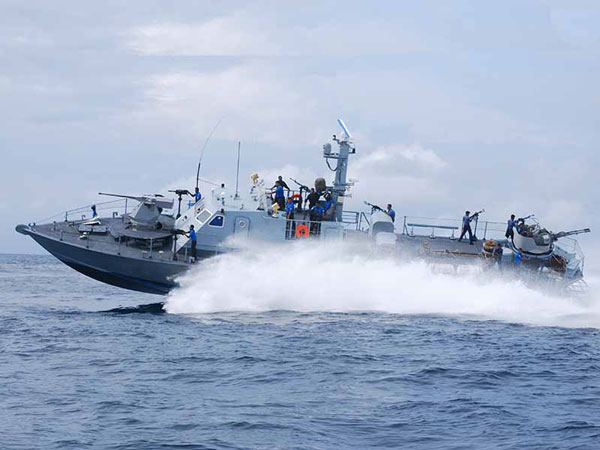If there is one force that has grown in strength after the 26/11 terrorist attacks, it is the Indian Coast Guard (ICG). From 74 vessels, the ICG fleet has grown to 134 and its air wing has increased to 58 aircraft, from 44 in 2008.
“The coast guard’s growth has been tremendous,” said SPS Basra, former inspector general of ICG. Basra headed the western region at the time of the attacks that began on November 26, 2008, and was part of the team that subsequently planned the expansion of Coast Guard.
The ICG is the smallest armed force in the ministry of defence and has jurisdiction of India’s 7,516-kilometre coastline and Exclusive Economic Zone. It patrols the distance between the shore and 12 to 200 nautical miles. The ease with which terrorists were able to enter Mumbai by sea in 2008 exposed critical problems in the ICG, including shortage of manpower and vessels. Since then, there have been concerted efforts to strengthen the ICG. The number of ICG stations across the country now stands at 71, in comparison to the 22 in 2008. In 2017, the Centre approved a Rs 31,748-crore, five-year programme to add to the ICG’s resources.
Before 2008, the ICG had only 74 ships in the western sector, out of which 25 were used for regular patrolling. Now, the number of ships has gone up to 134 and 28 new ships have been added, including four advance offshore patrolling vessels, three fast patrolling vessels, two hovercraft and one harbour craft.
“As part of its plan to increase coastal security particularly in the west region, the ICG has planned air stations in Ratnagiri and Thiruvananthapuram, which would further supplement the current air stations at Chennai and Daman,” said an officer.
The ICG maintains 16 to 20 ships, to patrol between 12 and 200 nautical miles on the 1,836-kilometre western coastline, on a daily basis. “We had 44 aircraft in 2008. Since then 14 new aircraft have been added and total 58 aircraft are operational,” said an ICG official adding that the aircraft number should increase to at least 100 by 2020.
A coastal station was commissioned at Dahanu near Mumbai in 2012, and two CG stations have come up in Ratnagiri and Murud Janjira. “We now have a plan for an air station at Ratnagiri which is expected to be completed in the next five years,” said the officer. “During any emergency in the western sector, a Dornier aircraft was flown from Daman and it required at least two hours. An air station at Ratnagiri will be a fillip to the ICG’s efforts to undertake any operation,” said Basra.
To prop up coastal security, there are 46 coastal radars that are functional across India, 18 of which are along the western region. These radars can detect even a human body at a distance of 23 kilometres in the sea. “Thirty eight more radar stations including four mobile radar stations will be installed as per the government’s new proposal of the coastal security network,” added the ICG official. Of the proposed 38 radar stations, 14 radar stations will be in the western region and the acquisition of land and electricity are in progress, he said.
Source:HT
Image Courtesy:DN
You may also like
-
IAF Aircraft Set Course For Exercise Eastern Bridge VII At Oman
-
IAF Set To Host The Indian Defence Aviation Exposition-II At Jodhpur
-
Defence Secretary to co-chair 5th India-Philippines Joint Defence Cooperation Committee meeting in Manila
-
Simultaneous Launch Of ‘malpe And Mulki’, Fourth And Fifth Ships Of Asw Swc (Csl) Project
-
Aatmanirbharta in Defence: MoD signs Contract with HAL for 240 AL-31FP Aero Engines for Su-30MKI Aircraft
